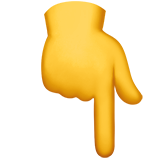Установление соответствия
Установите соответствие между текстами A–G и заголовками 1–8. Занесите свои ответы в таблицу. Используйте каждую цифру только один раз. В задании один заголовок лишний.
| A. | The 1st of April has no official recognition, but for a long time it has been known as a day to celebrate foolishness. Even though we don’t care where April Fools’ Day comes from, we hold this tradition of making other people look stupid with practical jokes. It’s a day for pranks of all kinds, even online, TV or radio pranks. There is definitely some merriment for those who put their sense of humor into gear and get prepared.
| 1. | Through ages and cultures |
| B. | According to the most common theory, in the 16th century, Pope Gregory XIII issued a decree about a new standard calendar for Christian Europe. The calendar took his name and centuries later became the standard used internationally. Prior to the 16th century, Europe’s nations operated using the Julian calendar. The Gregorian calendar moved New Year’s Day from the end of March to January 1, among other changes.
| 2. | Who were the first ‘fools’ |
| C. | Catholic monarchies were the first to follow the changes in the calendar. Protestants followed later. However, some Europeans didn’t like these changes and continued celebrating the New Year between March 25 and April 1. April fools were those who still celebrated the holiday in the spring, and were the subject of pranks by those who had observed the New Year months ago. This practice became an annual tradition of April 1 prank-playing.
| 3. | Real danger, not a joke |
| D. | April Fools’ Day was introduced to the American colonies by British and French settlers. There were other occasions resembling this tradition. Ancient Romans held a festival known as Hilaria to honor the god Attis. Hilaria, of course, resembles the word ‘hilarity’ in English. The modern equivalent of Hilaria is called Roman Laughing Day. In India, people play jokes and throw colorful dyes at each other to celebrate Holi, a Hindi festival.
| 4. | Ready for a joke? |
| E. | Some pranks and practical jokes can be very old and hackneyed. Some other pranks are off the beaten track. To try something new it is advised to buy a box of donuts in a supermarket and replace them with some Brussel sprouts or other non-delicious food. When the sprouts are put into the box, the closed box should be left on the counter or in a café for any victims to find! This is quite a harmless practical joke.
| 5. | TV jokes are the best |
| F. | A space rock may have visited the Earth on April Fools’ Day. The news about its flyby was no prank. The asteroid passed within
| 6. | Evolution of the holiday jokes |
| G. | The style of April Fools’ jokes has changed over the years. Modern pranks tend to center more around sham telephone calls and media-driven foolery. To sum up, April Fools’ Day is a ‘for fun only’ observance, a time when nobody is expected to buy gifts, receive cards or spend money. The primary force behind any pranks is that they should not be harmful but able to be enjoyed by everyone … especially the person upon whom the joke is played.
| 7. | Who introduced different dates |
| 8. | A tip for a good joke |




